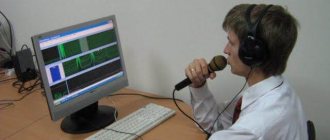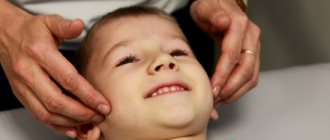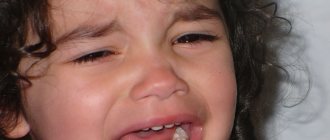Stuttering is classified as a specific form of neurosis (logoneurosis) or a neurosis-like condition in which speech underdevelopment is observed.
The basis of stuttering is a violation of the interaction between neuroprocesses in the cerebral cortex (inhibition and excitation).
This pathological change in the coordinated activity of nervous processes in the cortex and subcortex of the brain leads to the fact that asynchronous nerve impulses reach the nerve centers of the cerebral cortex, including speech, and cause the appearance of convulsions of the organs of the speech apparatus (larynx, pharynx, tongue and lips). Convulsive activity (excessive excitation) of motor neurons provokes a violation of the timely activation of the structures of the speech apparatus, causing a disturbance in the tempo and smoothness of speech movements, changes in breathing, pitch and strength of sounds.
The child’s nervous system, which is not fully formed, under the influence of certain factors, begins to work within the framework of deviations from the norm. Most often, stuttering is observed in children of both sexes under the age of 5 years, since during this period the most active development of phrasal speech occurs, which means speech formation is most vulnerable to stimuli.
Among the significant factors causing stuttering in children, experts identify:
- weakness of the nervous system due to infectious diseases (meningitis, rubella, measles, etc.);
- history of traumatic brain injury in the child;
- the presence of chronic pathology (pneumonia, rheumatism, etc.);
- presence of cerebral palsy;
- complicated pregnancy;
- domestic conflicts, etc.
These factors do not necessarily lead to speech neurosis; most often (about 70% of cases) it manifests itself under the influence of a strong traumatic stimulus: fear or stress.
Thus, stuttering develops due to genetic (neuropathic constitution of the child) and neurological factors.
Stuttering therapy involves a comprehensive approach and should be carried out when the first signs appear.
In order to overcome stuttering in a child, the joint efforts of parents and children's doctors are necessary: a psychologist, a neurologist and a speech therapist. The treatment course is compiled individually, taking into account the mental characteristics and age of the child. Typically, a therapeutic program for stuttering consists of two main complementary blocks:
- therapeutic and recreational, aimed at normalizing the psyche and functioning of the nervous system, as well as improving the health of nervous tissue;
- correctional and educational, providing for the education and consolidation of correct speech skills and standards.
What is stuttering in children?
Stuttering is a speech disorder that occurs due to genetic or neurological dysfunction of the child’s nervous system.
According to the nature of the disorders, experts distinguish two main types of logoneurosis, namely:
- tonic, accompanied by pauses in speech or prolongation of a certain sound;
- clonic, manifested as repetition of sounds, syllables or words;
- mixed.
Depending on the etiology, the following forms of stuttering are distinguished:
- neurosis-like, including difficulty articulating (impaired pronunciation of words, reading and writing);
- neurotic, in which the appearance and severity of pronunciation difficulties are associated with a stressful situation.
Speech neurosis can be caused by any deviations from the norms of child speech development, such as delayed speech development or an excess of new words.
About the disease
Stuttering is a violation of the smoothness and rhythm of speech, in which the child has difficulty pronouncing words and phrases, repeated repetition of syllables or short words, and lengthening of pauses before the start of pronunciation.
The disorder is based on spastic contraction of structures that provide speech function (muscles of the larynx, tongue, soft palate, lips). Spasms are caused by excessive stimulation of the corresponding centers in the brain (speech, emotional). As a result, articulatory, vocal or respiratory contractions occur that prevent the child from speaking smoothly and rhythmically. Most often, stuttering occurs in children 2-4 and 5-7 years old. This disorder is found 4 times more often in boys than in girls. In 50-80% of cases the condition can be corrected. The key to success is timely seeking qualified help. The earlier therapy is started, the greater the chances of getting rid of the speech defect forever.
How to identify stuttering in children?
Despite the fact that stuttering can manifest itself in different ways, muscle spasms of the speech apparatus always cause characteristic symptoms. The difference in the forms of logoneurosis is based on the specific frequency, localization and duration of speech disorders.
Indicators of stuttering in children are:
- disorder of accuracy, intelligibility and clarity of phrases;
- the absence of particularly difficult words, syllables or sounds in speech;
- spending a lot of effort on speech reproduction (the child’s face may turn red, sweat may appear, etc.);
- the presence of auxiliary movements during conversation (shifting from foot to foot, sniffing, clenching fists, etc.). The lack of qualified assistance can lead to the consolidation of these motorcycle standards and subsequently have an additional negative impact on the child’s psyche;
- fear of speech, irritability, tearfulness and withdrawal;
- passive-aggressive behavior;
- difficulties in performing activities requiring fine motor skills (due to impaired motor coordination);
- enuresis, appetite and sleep disorders, etc.
In Soviet childhood psychiatry, it is traditional to distinguish a special group of “systemic” or “monosymptomatic” neuroses [Sukhareva G. E., 1959; Kovalev V.V., 1979]. Some of these disorders disappear during adolescence. Stuttering and enuresis can persist in adolescents and are much less common in adults. However, in these cases, the picture and course of these disorders allow, in most cases, to doubt their neurotic genesis. Only the adolescent’s personal reaction to his own shortcoming turns out to be neurotic.
Stuttering. It usually occurs in childhood - most often at the age of 4-7 years, i.e. during the period of intensive development of speech activity. In childhood, it is customary to distinguish between neurotic and neurosis-like stuttering [Kovalev V., V., 1979].
Neurotic stuttering most often begins suddenly, after a strong fright. Tonic spasm of the speech muscles predominates. Deterioration occurs under the influence of psychogenic factors (fear, separation from parents, etc.). Children begin to feel ashamed of their shortcomings early on.
Neurosis-like stuttering usually develops gradually, often without previous mental trauma. The clonic spasm of the speech muscles is more pronounced. Deterioration occurs under the influence of somatic factors (infectious diseases, etc.). The neurological status may reveal symptoms of mild diffuse residual organic brain damage. Children are usually not ashamed of their shortcomings, they ignore them, on the contrary, they love to chat.
In adolescence, stuttering smoothes out for many people, and with proper treatment, it can completely disappear from childhood. However, some adolescents experience a relapse or intensification of stuttering at the age of 15-17 years [Tyapugin N.P., 1966 - cit. according to V. V., Kovalev, 1979], but, most importantly, the personal reaction to one’s speech defect is sharply manifested. Teenagers become shy, avoid peers, contact with strangers, refuse oral presentations, etc. Logophobia may develop - fear of oral speech. Something like a vicious circle develops between the personal reaction and the stuttering itself - one reinforces the other.
Such a personal reaction is often regarded as neurotic, emphasizing asthenicity, sensitivity, “pseudoschizoidness,” etc. However, outside of activities associated with oral speech, no asthenia is detected. The “sensitivity” of teenagers who stutter is also selective, and in this they differ from teenagers with sensitive character accentuation. For example, they willingly sing in front of an audience, perform in sports competitions, etc. “Schizoidity” consists entirely of avoiding contact with certain peers and unfamiliar people. Psychological studies using projective tests have revealed extrapunitiveness unusual for sensitive accentuation, i.e. hidden aggressive tendencies towards others [Shklovsky V.M., Ilderinskaya V.I., 1972J.
It is difficult to divide stuttering into neurotic and neurosis-like in adolescence. The characteristics of stuttering itself are no longer so clearly visible. A strong personal reaction to one’s defect and psychogenic deterioration of stuttering can be observed in all cases. Neurological symptoms can be compensated by this age. Finally, such a division is no longer relevant because speech therapy assistance is based on its own approaches to the classification of speech defects.
The pathogenesis of stuttering, from our point of view, allows us to doubt that this peculiar suffering should generally be classified as neuroses (the so-called logoneurosis). It is unlikely that stuttering falls under the definition of neurosis as “an irrationally and unproductively resolved contradiction between a person and the aspects of reality that are significant for him” [Myasshtsev V. N„ 1960]. When stuttering, as a rule, it is not possible to identify the psychologically understandable connection inherent in neuroses between speech disorders, personality characteristics and a traumatic situation. Such neurotic forms of stuttering are relatively rare. Rather, a person’s reaction to an existing defect may be neurotic.
Stuttering itself seems to be one of the forms of functional dysontogenesis, i.e., a disruption of a skill that is formed in ontogenesis. As is known, the concept of “mental dysontogenesis” is used to understand many disorders in children and adolescents [Kovalev V.V., 1979, 1981; Vrono M. Sh., 1979]. The functional inferiority of the speech motor system during stuttering has been established by special neuropsychological studies [Shklovsky V.M., Repnin V.Ya., 1972], but this inferiority apparently plays the role of a predisposing factor.
Mental traumas rather become provoking factors (for example, fear) or precipitating factors (for example, an unfavorable family situation). In some cases, overload of the speech apparatus or the imitation reaction characteristic of children, etc., turns out to be pathogenic.
The prognosis for stuttering in adolescents is relatively favorable. According to Yu. A. Florenskaya (cited from V. V. Kovalev, 1979), as 90% grow older, stuttering sharply decreases or disappears altogether.
Treatment of stuttering should be carried out by specially trained specialists and represent a single complex of speech therapy and psychotherapeutic methods.
hysterical neurosis – previous | next – enuresis
Adolescent psychiatry. Content.
When does stuttering go away in children?
According to the observations of specialists, signs of pathology increase with fatigue, especially in the autumn-winter period of the year. The severity of stuttering directly depends on the environment in which the child is currently located. So, in the morning and in a comfortable situation, speech impairment may not appear, but in the company of peers it increases significantly.
It is known that children do not stutter when they are alone, reading poetry and singing songs.
If a child’s speech neurosis was provoked by a temporary factor (a quarrel between parents, a sudden sharp sound, etc.), then it is possible that he will eliminate himself within a month. In some cases, a relapse of stuttering is possible, which subsequently also disappears.
However, when the speech reproduction disorder does not go away on its own, it is necessary to seek professional help from a doctor.
Signs indicating the need to make an appointment with a pediatric speech therapist or neurologist are:
- speech disorders in a child over 4 years of age;
- the duration of the disorder of fluency and continuity of speech is more than 3 months (it is important to keep a calendar of the appearance/disappearance of disorders, where each relapse serves as a new starting point);
- facial nervous tic when talking;
- hereditary factor for stuttering.
What to do if your child stutters?
When the first signs of stuttering appear in a child, you should consult a doctor and undergo a comprehensive diagnosis. Based on the results obtained, the pediatrician will refer you for treatment to a specialized specialist.
If the speech disorder is of a neurotic nature, then the leading specialists in therapy are a child psychologist and a neurologist.
In case of neurosis-like stuttering, the main doctor will be a speech therapist-defectologist, often with additional help from a neurologist.
Since the correction of stuttering is complex, in addition to classes with doctors, the help of parents occupies a significant place in the treatment of pathology.
Effective ways to help parents overcome their child’s stuttering are:
- creating a comfortable and friendly atmosphere at home;
- adherence to a daily routine with a mandatory 10-hour sleep;
- measured pace of study;
- healing and hardening of the child (vitamins, gymnastics that improve coordination, breathing and functioning of the cardiovascular system);
- clear, calm, unhurried speech of parents;
- absence of sharp gestures and raising the voice of parents;
- support with tactile contact, praise;
- the child’s ability to speak at a pace that is comfortable for him, etc.
Speech classes are also performed at home with the child. In these classes, it is necessary to use material (books, films, games, crafts), on the basis of which the subsequent conversation is conducted. During the conversation, parents gently correct speech, without focusing on its defects.
Speech classes are built on the principle of “constantly, as much as possible and gradually,” that is, from a simple statement to a detailed answer. It is extremely important to conduct classes regularly for 3-4 months, overcoming the fear of speaking.
How is stuttering in children treated?
Numerous therapeutic techniques are used to treat logoneurosis in children. The selection of treatment tactics is carried out by a doctor, based on the characteristics of the speech pathology and psyche of the child.
The most popular methods of normalizing speech for stuttering are:
- silence mode (4-6 day period of speechless communication using special signals. It is effective for stopping spasms of the speech apparatus, stimulating new spasms);
- Speech therapy rhythm is a correctional combination of music, speech and movement, which involves repeated repetition of developed motor skills;
- breathing and articulation gymnastics for training the articulatory organs and developing speech breathing;
- improving fine motor skills as a way to stimulate nerve centers in the brain (areas responsible for speech and movement are located very close);
- massage;
- voice exercises to normalize speech motor skills, etc.
To relieve muscular and mental tension during stuttering, relaxation techniques are used to promote emotional stability and concentration. Medications that calm the nervous system and relax the muscles of the speech apparatus structures are often prescribed.
Treatment for stuttering
The specialists of our Center know well how to treat logoneurosis. They have extensive experience in successfully treating stuttering and other speech disorders in children. Therapy includes various techniques that are selected individually according to the type of disorder and its severity. The treatment involves methods such as speech therapy correction of stuttering, gymnastics, segmental massage, and reflexology.
One of the most effective ways to treat stuttering is transcranial magnetic stimulation. This method is based on the therapeutic effect of a magnetic field on the affected areas of the brain. The TMS method is absolutely harmless and shows in practice high effectiveness in the treatment of logoneuroses. It is widely used in the best clinics in Europe. Our specialists have been trained abroad and have official certificates confirming the right to use the method of transcranial magnetic stimulation for the treatment of children and adults.
Is it possible to cure stuttering in a child?
Treatment of stuttering, especially the neurosis-like type, is a long process. Usually it takes about a year, but in the future it requires constant dynamic monitoring by a neurologist and taking prescribed pharmacological medications.
Timely consultation with a doctor and careful adherence to all his recommendations provide a favorable prognosis for the treatment of stuttering.
However, according to WHO, in 1% of children the pathology may persist, despite the efforts of doctors and parents. In this situation, the help of a psychologist will be effective, helping to establish communication and manage the emotional state.








